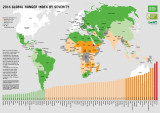2011 Global food policy report [in Chinese]
The year 2011 highlighted ongoing challenges to global food security, from food price volatility, extreme weather shocks, and famine to unrest and conflicts. On the policy front, major developments at the global and national levels both offered grounds for encouragement and pointed to areas where further action is needed.












